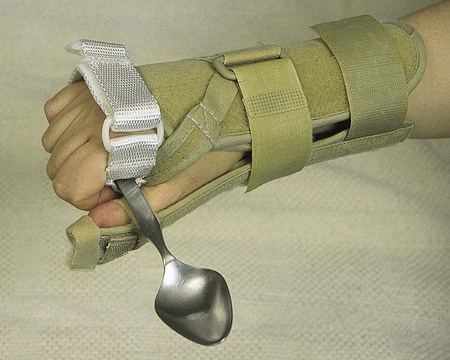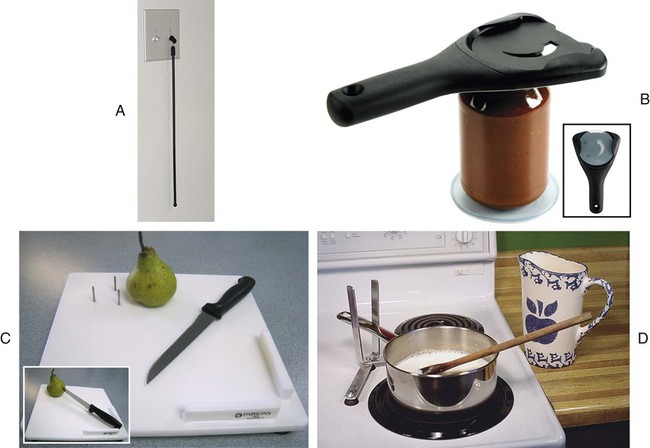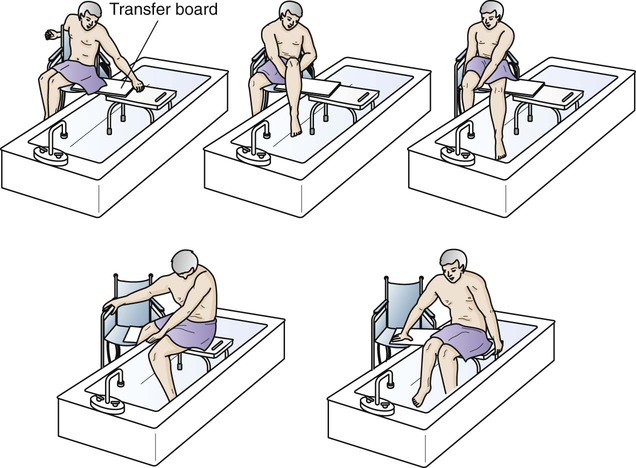• Define the key terms and key abbreviations listed in this chapter. • Describe how rehabilitation and restorative care involve the whole person. • Identify the complications to prevent. • Identify the common reactions to rehabilitation. • Explain your role in rehabilitation and restorative nursing care. • List the common rehabilitation programs and services. • Explain how to promote PRIDE in the person, the family, and yourself. See Focus on Older Persons: Rehabilitation and the Whole Person. Rehabilitation starts when the person first seeks health care. Complications are prevented. They can occur from bedrest, a long illness, or recovery from surgery or injury. Bowel and bladder problems are prevented. So are contractures and pressure ulcers. Good alignment, turning and re-positioning, range-of-motion (ROM) exercises, and supportive devices are needed (Chapters 13, 14, and 23). Good skin care also prevents pressure ulcers (Chapters 16 and 25). • Eating devices include glass holders, plate guards, and silverware with curved handles or cuffs (Chapter 20). Some devices attach to splints (Fig. 27-1). • Electric toothbrushes have back-and-forth brushing motions for oral hygiene. • Adaptive devices for hygiene promote independence. Some are shown in Figure 27-2. • Self-help devices are useful for cooking, dressing, writing, phone calls, and other tasks. Some are shown in Figure 27-3. See Focus on Surveys: Self-Care. The person may need crutches or a walker, cane, or brace (Chapter 23). Physical and occupational therapies are common for musculo-skeletal and nervous system problems. Some people need wheelchairs. If possible, they learn wheelchair transfers to and from the bed, toilet, bathtub, sofa, and chair and in and out of vehicles (Fig. 27-4).
Assisting With Rehabilitation and Restorative Nursing Care
Rehabilitation and the Whole Person
Physical Aspects
Self-Care.
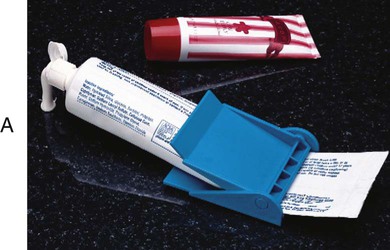
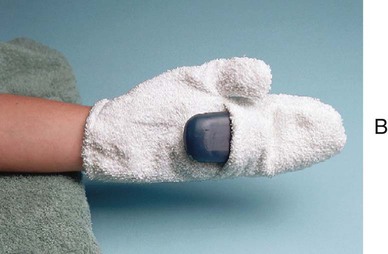
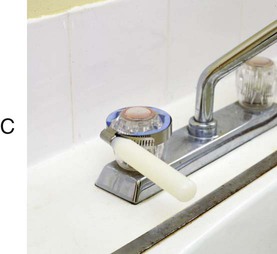

A, Tube squeezer for toothpaste. B, The mitt holds a bar of soap. C, A tap turner makes round knobs easy to turn. D, A long-handled sponge is used for hard to reach body parts.
Mobility.
![]()
Stay updated, free articles. Join our Telegram channel

Full access? Get Clinical Tree


Assisting With Rehabilitation and Restorative Nursing Care
Get Clinical Tree app for offline access

